This publication is best viewed using the pdf version.
Citrus Canker
The purpose of this publication is to aid citrus growers in distinguishing between citrus canker and leprosis symptoms on fruit.
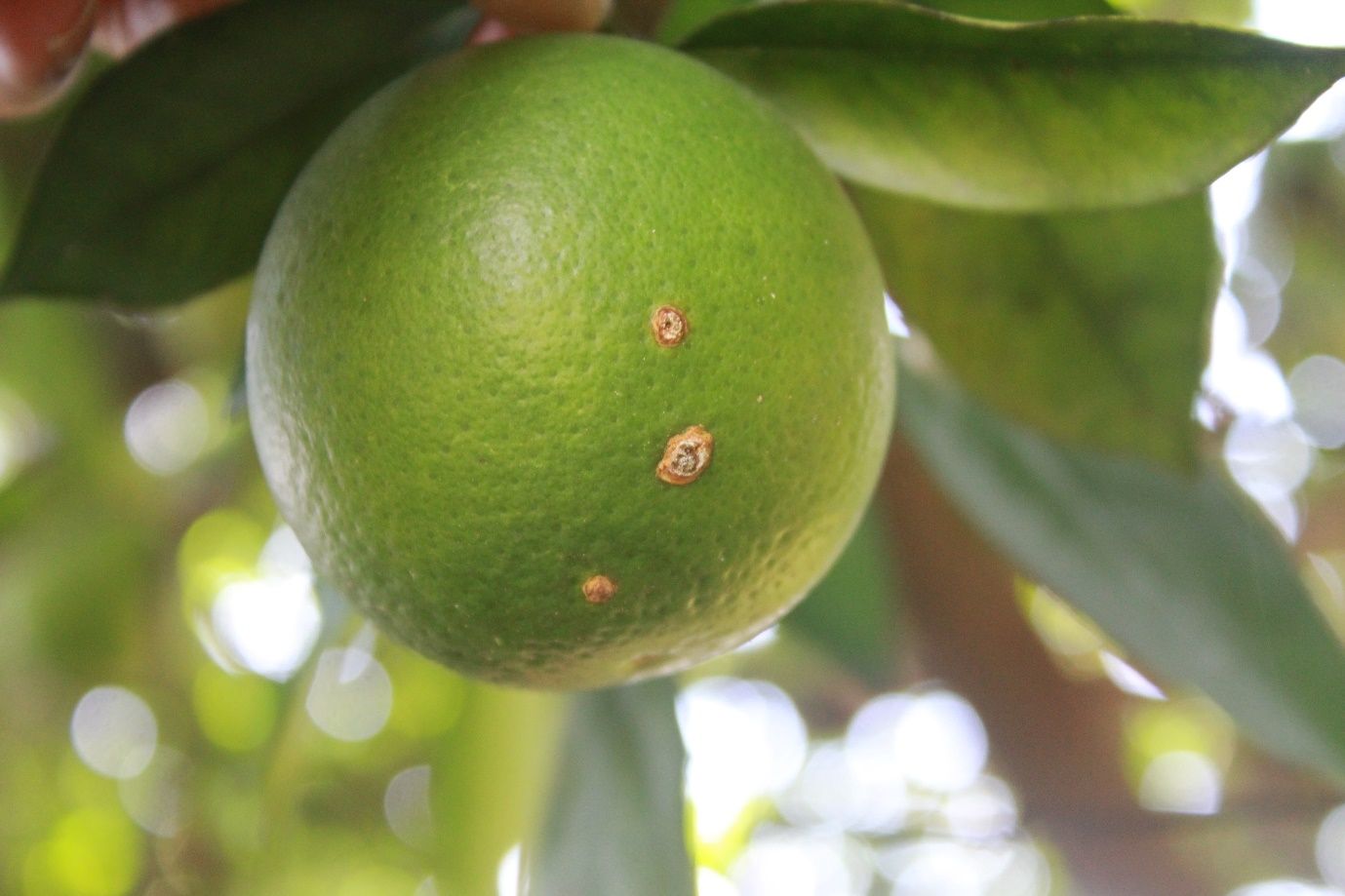
Credit: J. D. Burrow, UF/IFAS
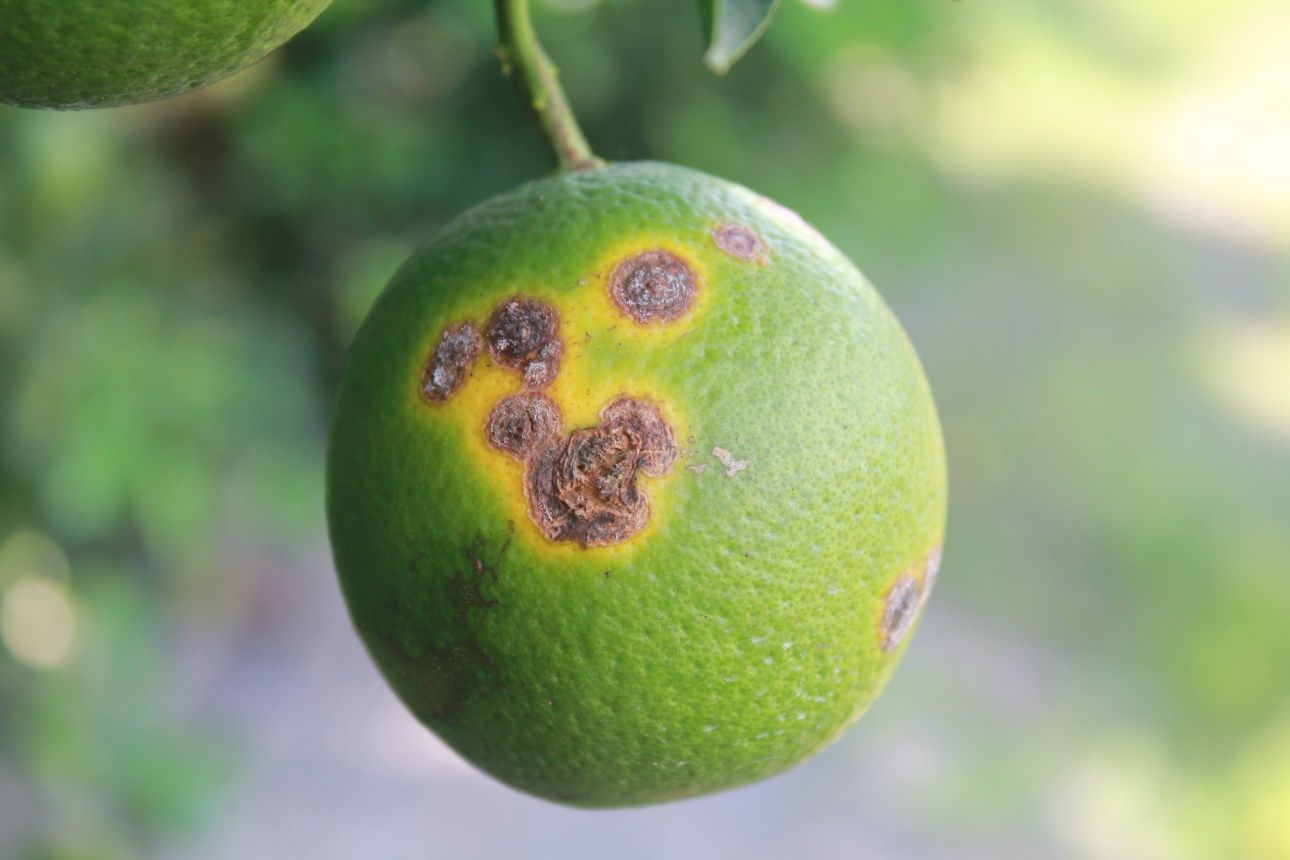
Credit: J. D. Burrow, UF/IFAS
Citrus canker is a bacterial disease that is easily spread by wind-blown rain and the movement of equipment and people.
Fruit Symptoms
- Lesions are generally circular in shape and highly raised in texture.
- Lesions vary in size through coalescence (merging into one whole).
- Very early symptoms can appear dark brown.
- Early symptoms can appear dark brown.
- As the lesions age, a prominent yellow halo forms, and the center becomes dark brown to black.
- When moisture is present, oozing may occur.
- Circular cracks often form in the lesions.
Citrus Leprosis
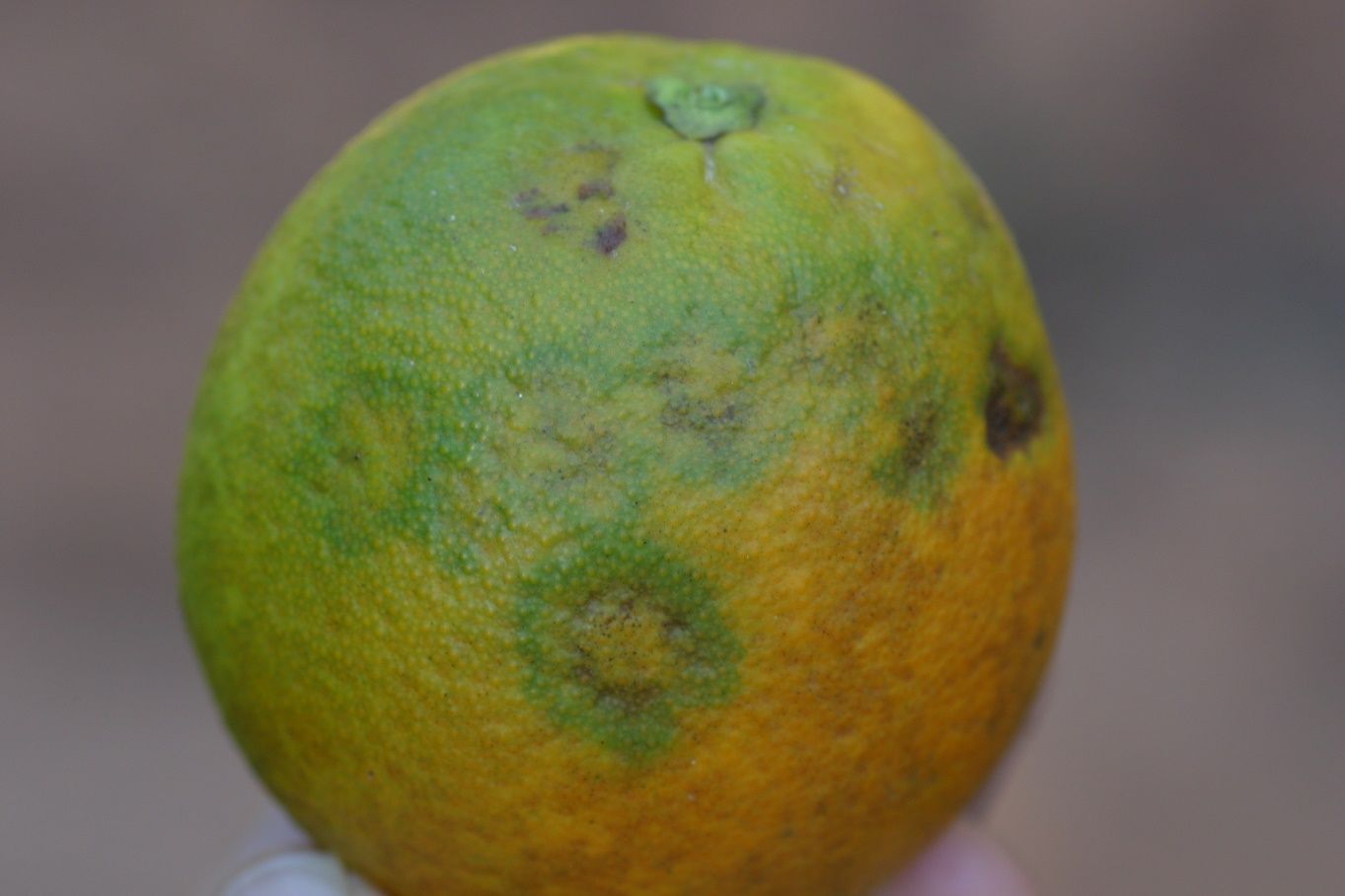
Credit: M. E. Rogers, UF/IFAS

Credit: M. M. Dewdney, UF/IFAS
Citrus leprosis is a viral disease that is spread by a group of mites in the genus Brevipalpus. The lesions are caused by infected flat mites feeding on the fruit peel. The mites move by wind but also can be moved by equipment and people.
Fruit Symptoms
- Lesions are generally circular but can coalesce.
- Early symptoms are flat and circular with the beginning stages of necrosis (dead areas).
- As the lesions age, they form concentric rings (zone pattern) with necrosis.
- Older lesions may be rusty-red to brown and sunken. Lesion centers may crack in high temperatures.
Citrus Canker
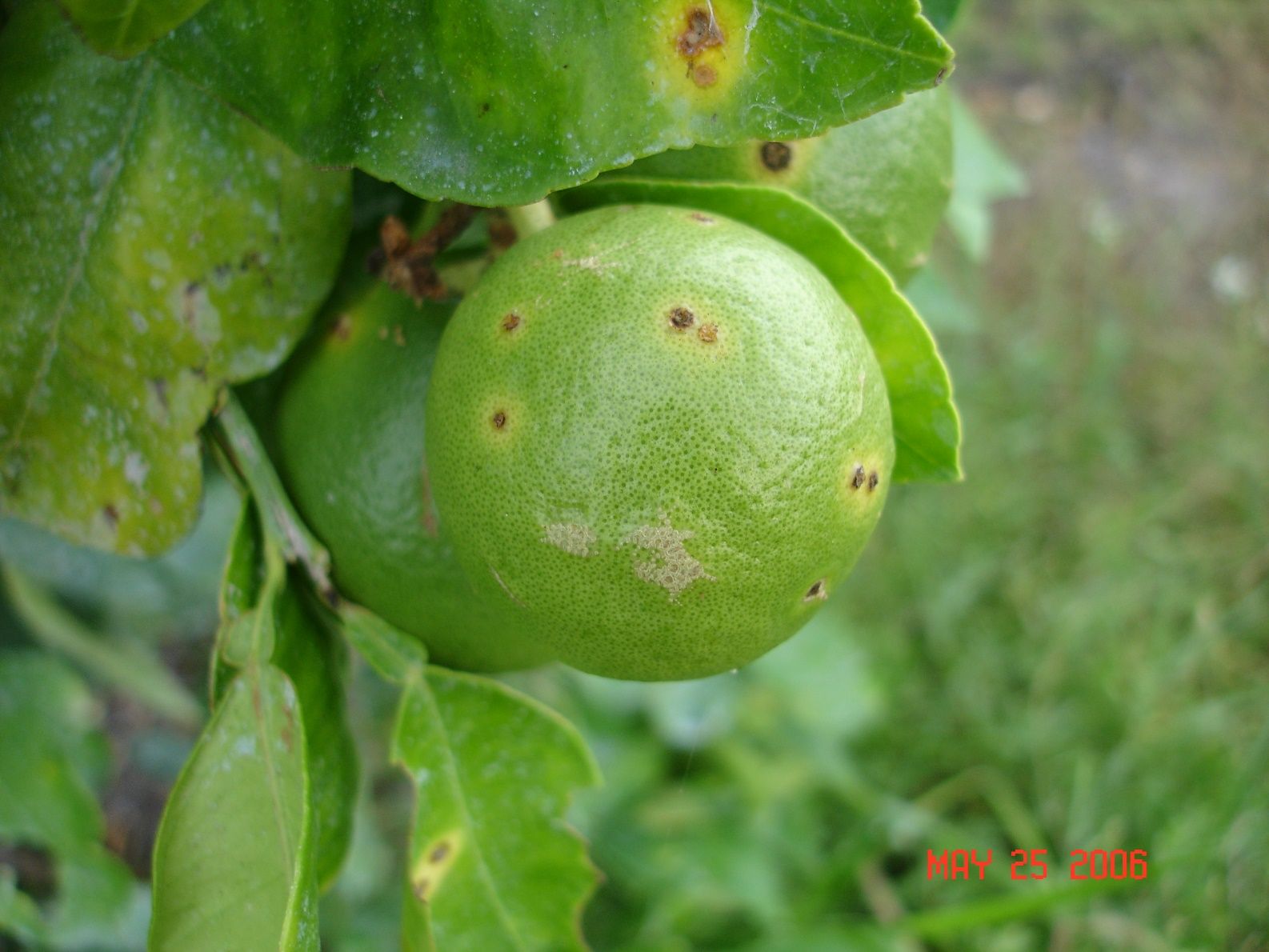
Credit: H. Chamberlain, former UF/IFAS
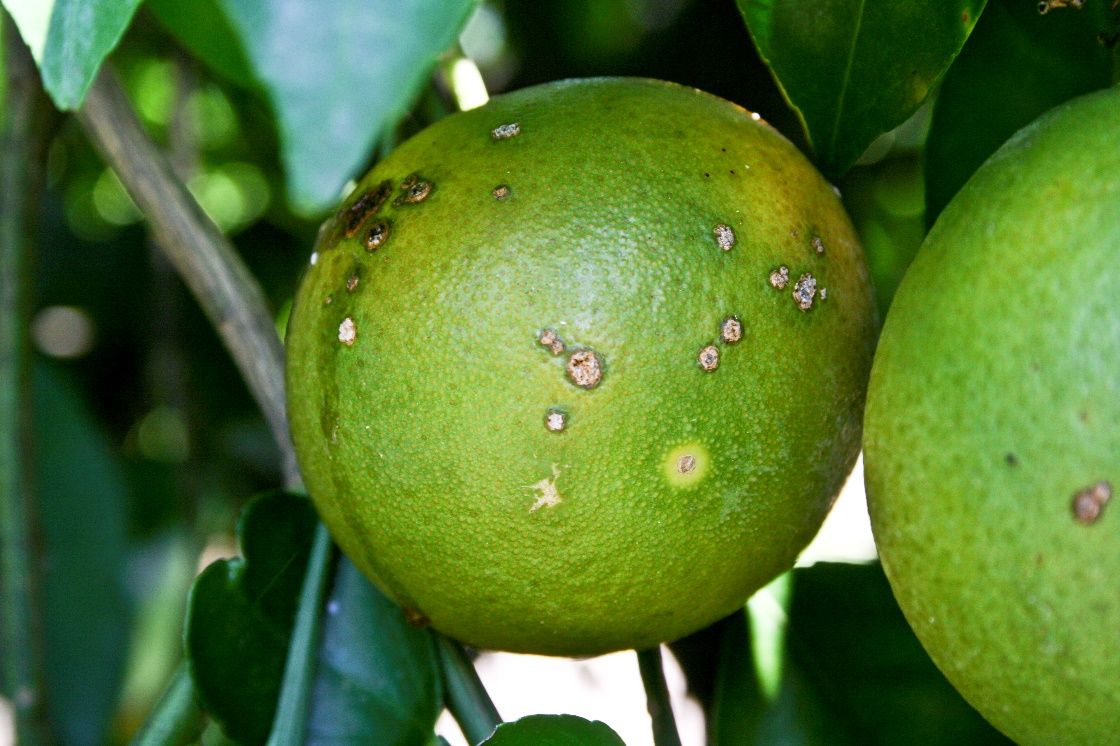
Credit: M. M. Dewdney, UF/IFAS
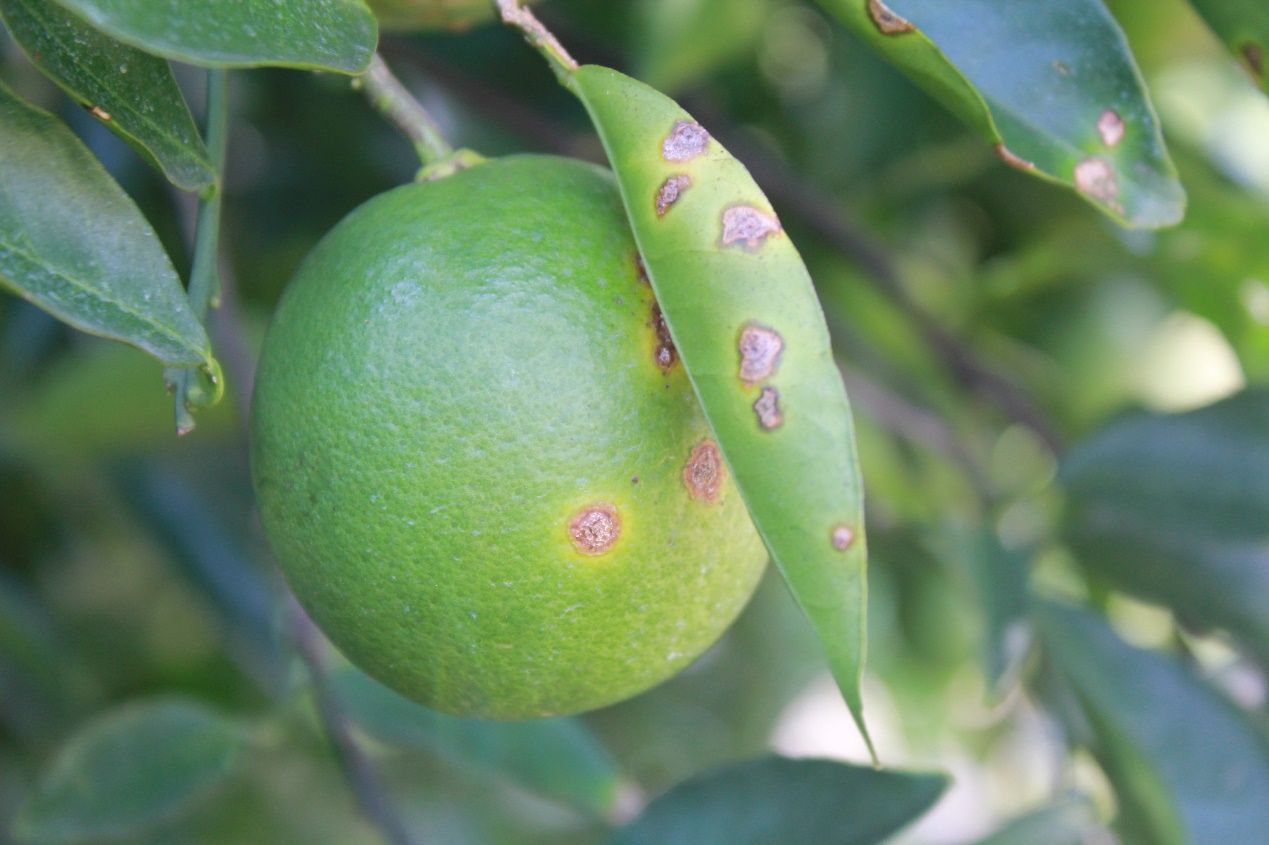
Credit: J. D. Burrow, UF/IFAS
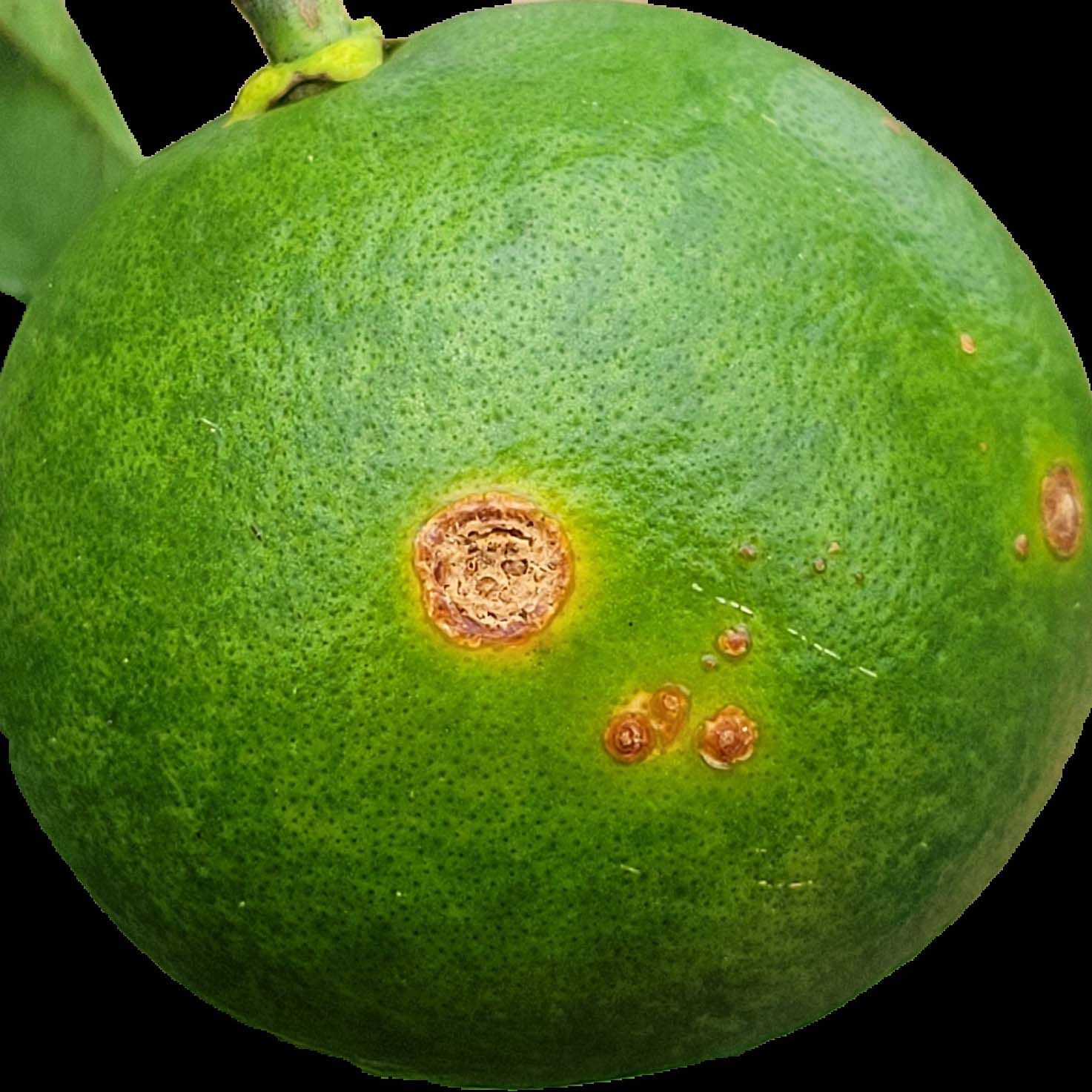
Credit: M. M. Dewdney, UF/IFAS
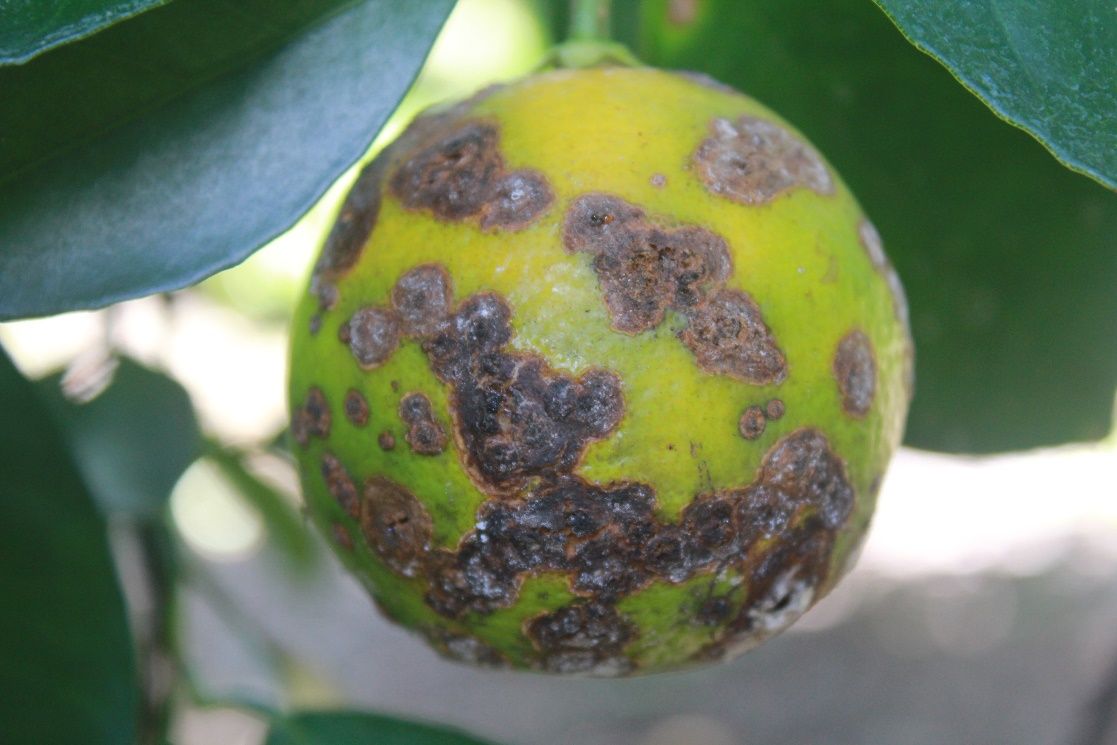
Credit: J. D. Burrow, UF/IFAS
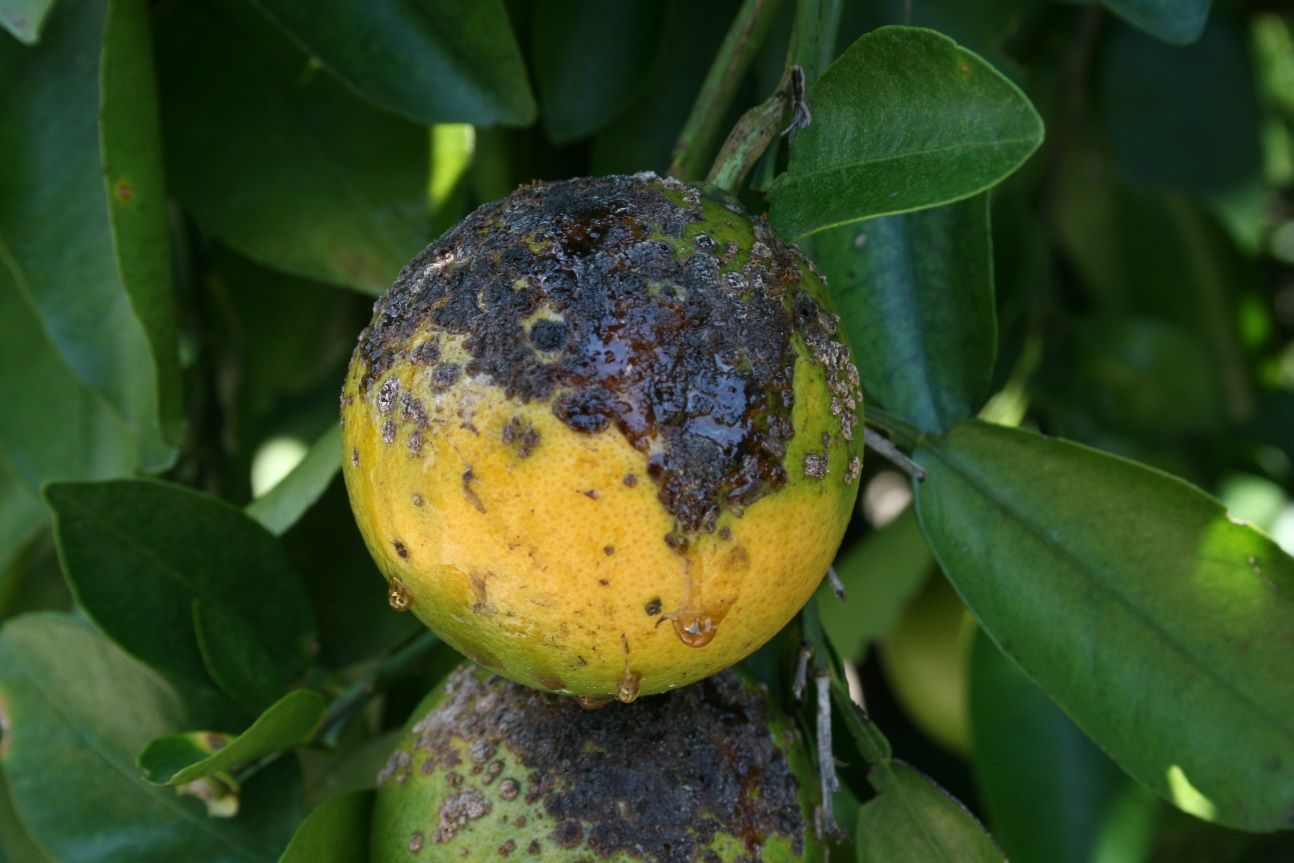
Credit: J. D. Burrow, UF/IFAS
Citrus Leprosis
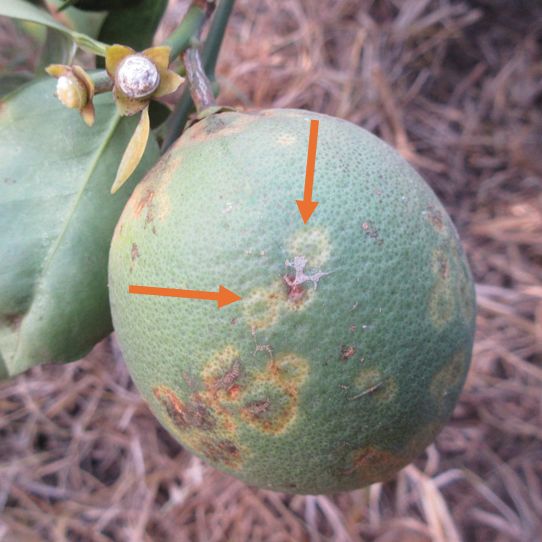
Credit: A. Levy, UF/IFAS
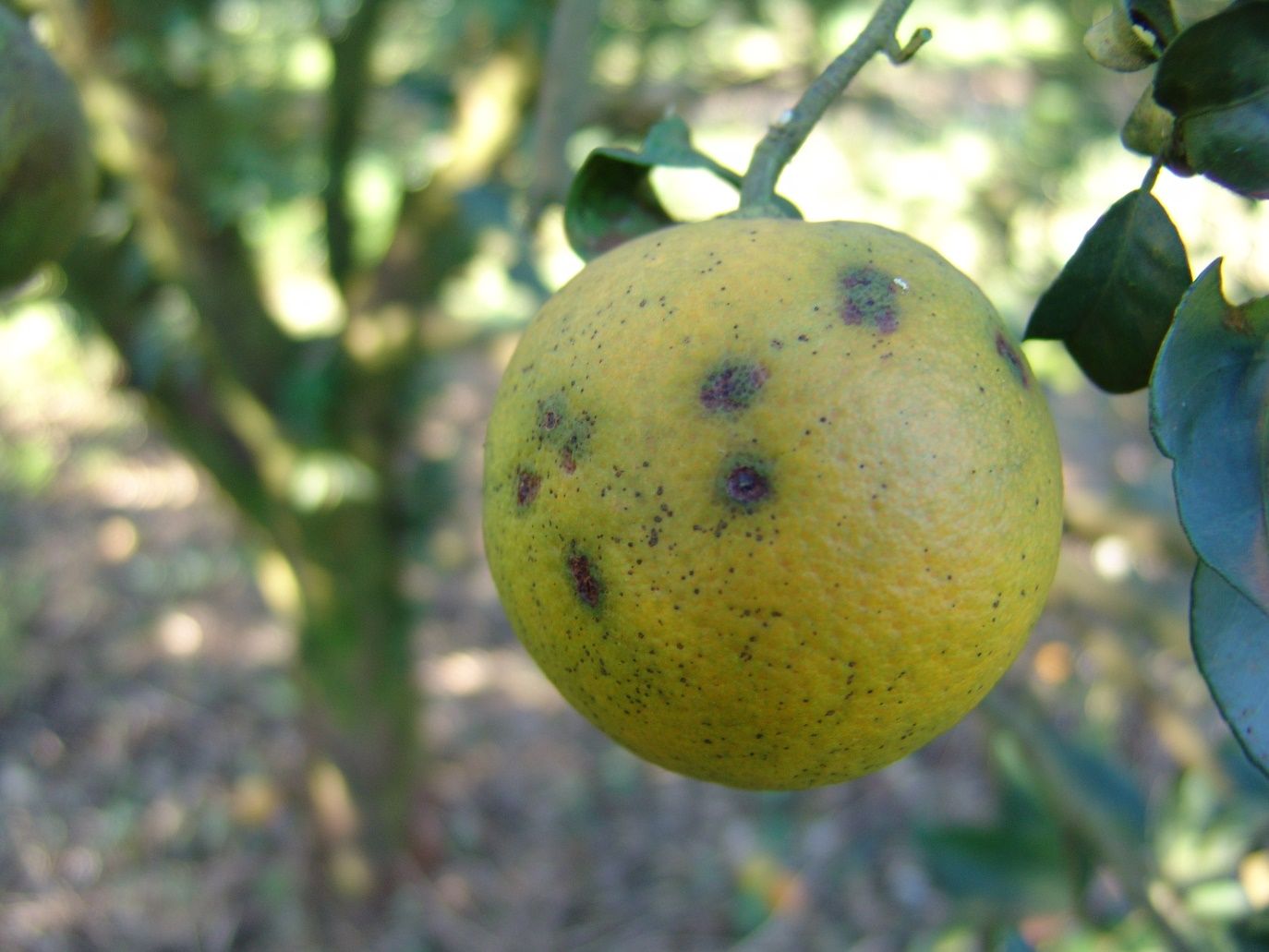
Credit: S. H. Futch, former UF/IFAS
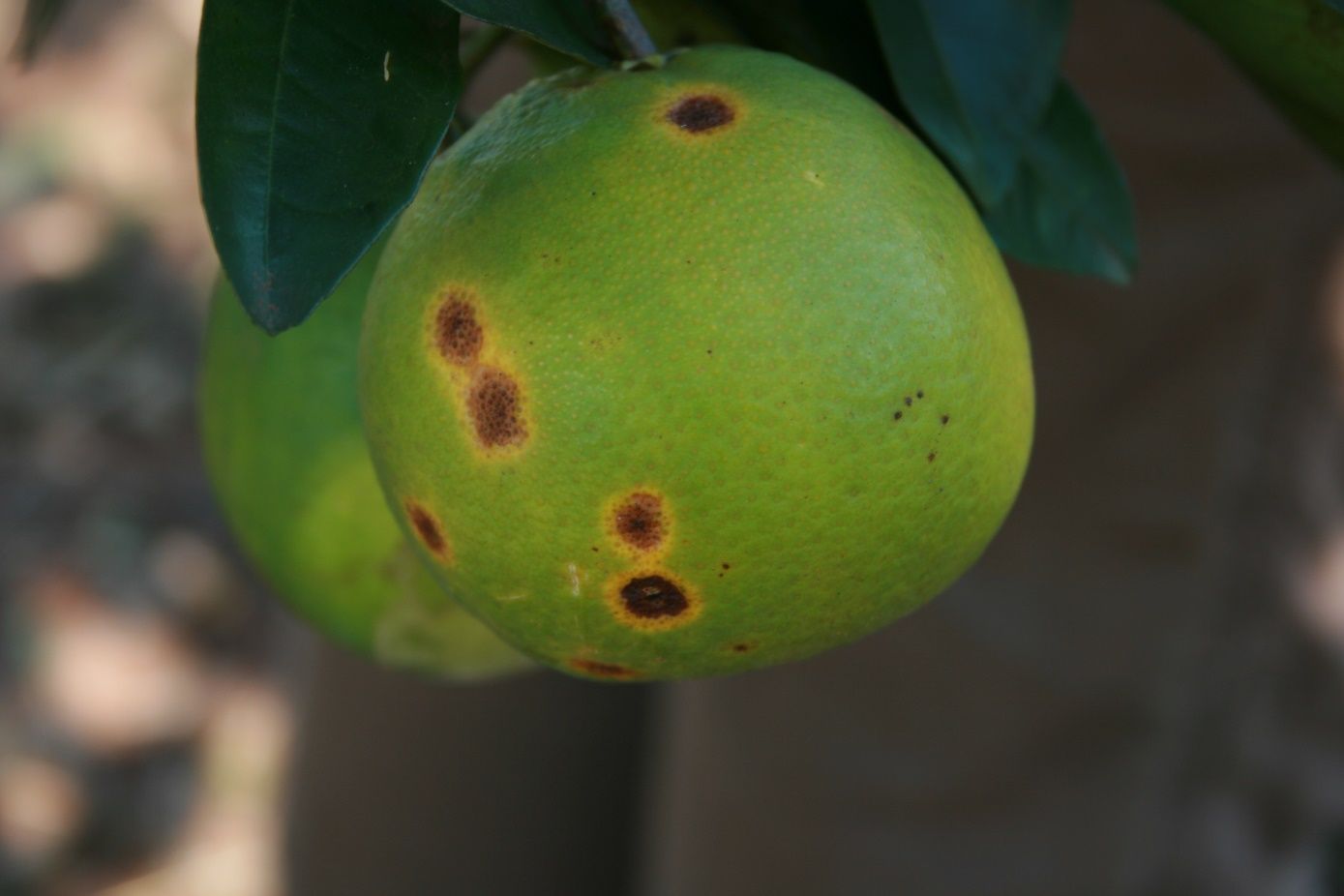
Credit: J. D. Burrow, UF/IFAS
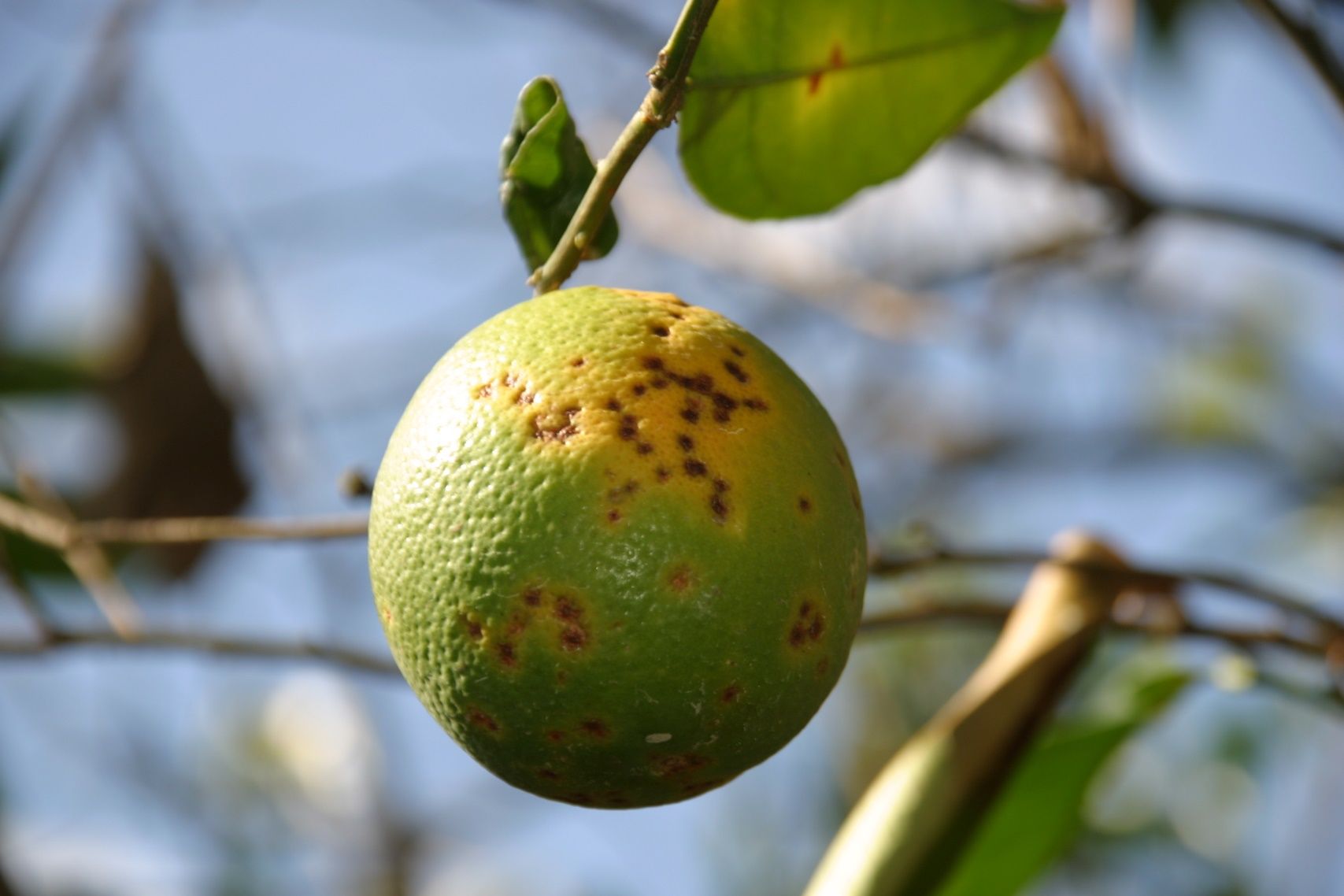
Credit: M. E. Rogers, UF/IFAS
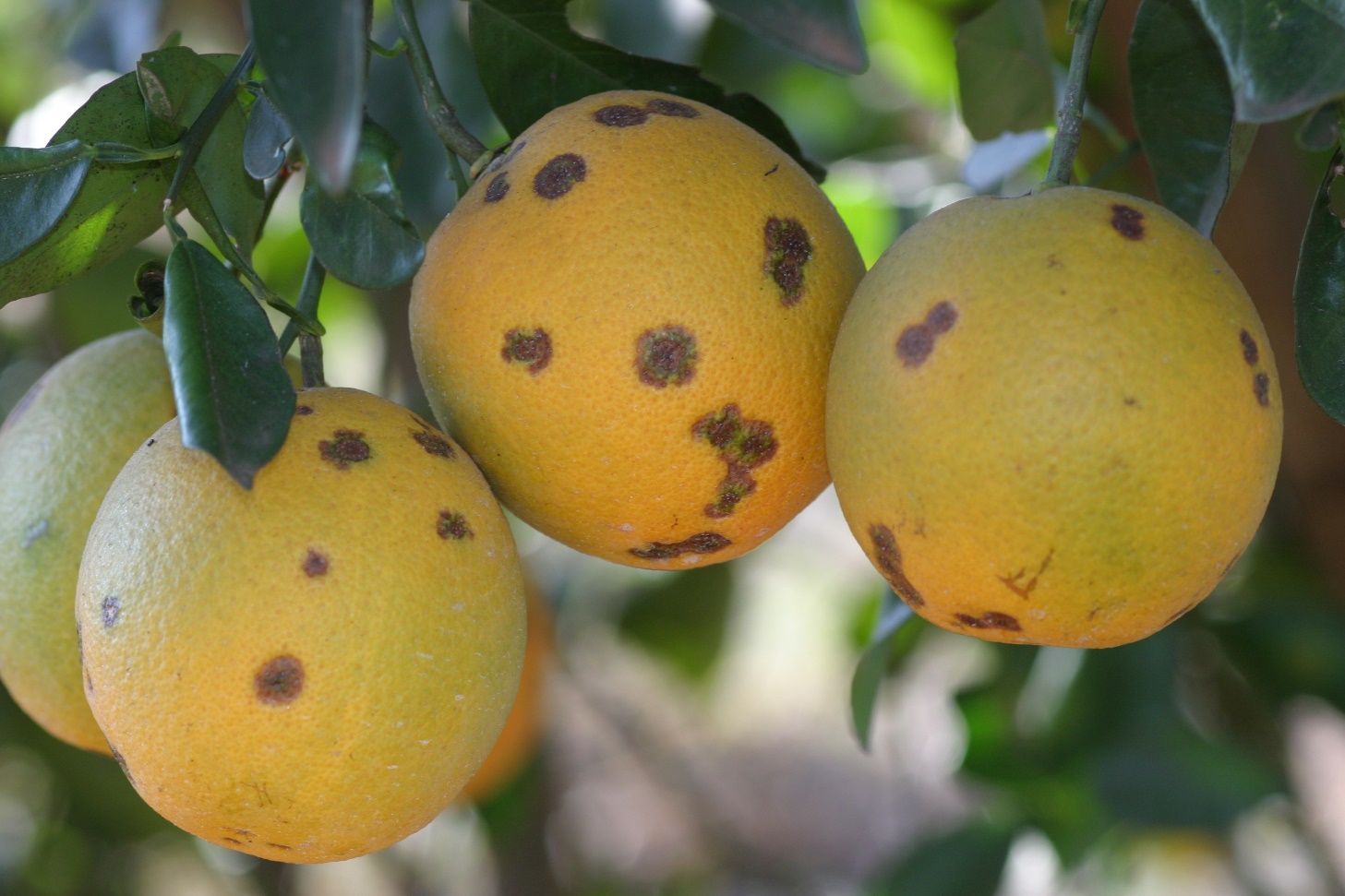
Credit: M. E. Rogers, UF/IFAS
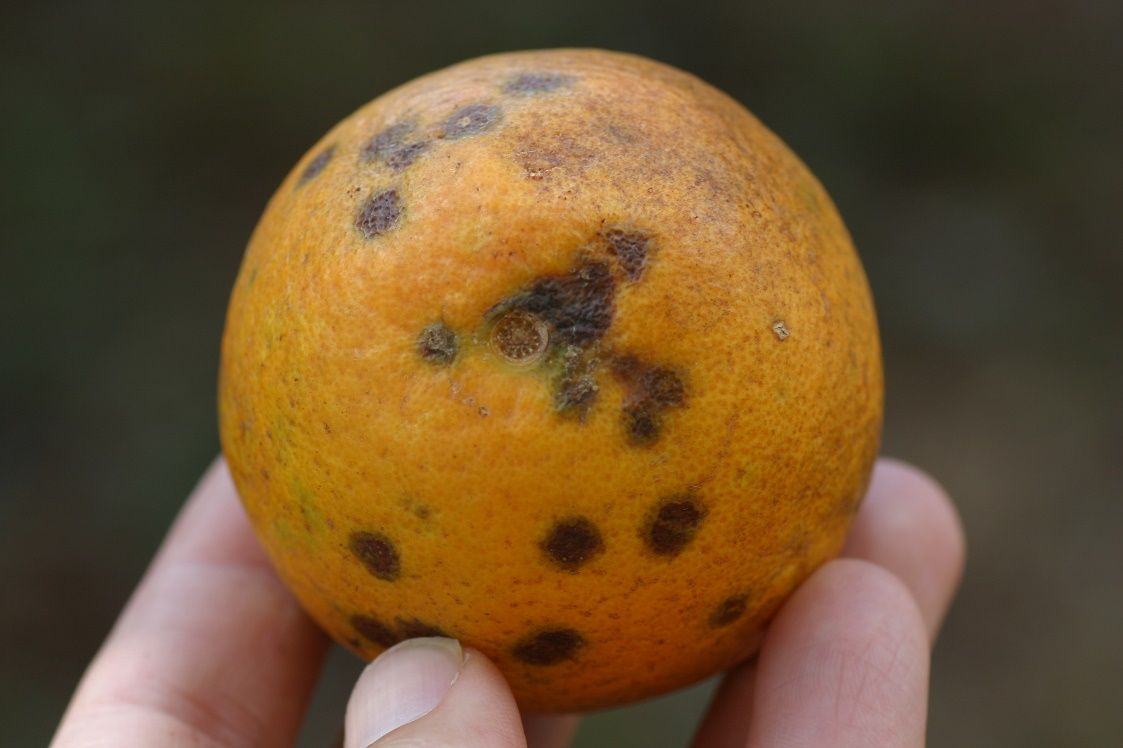
Credit: M. E. Rogers, UF/IFAS